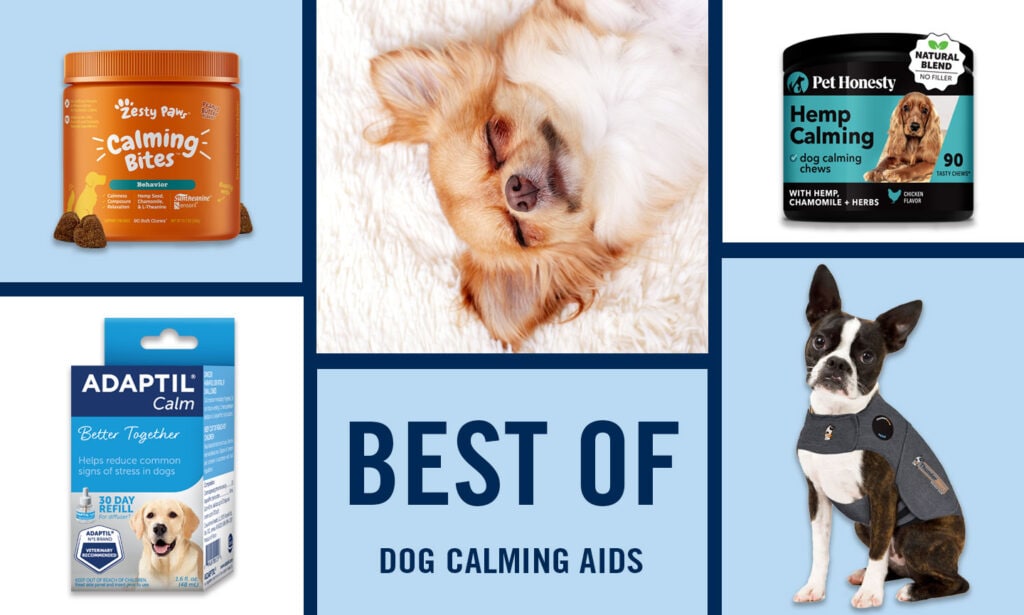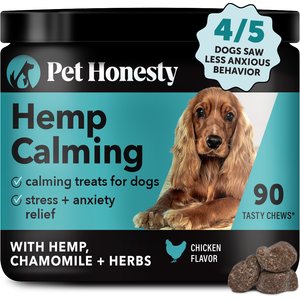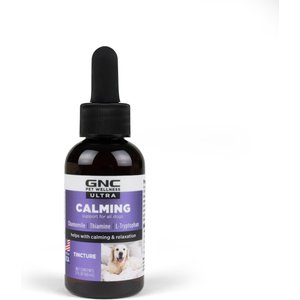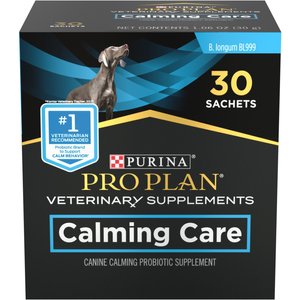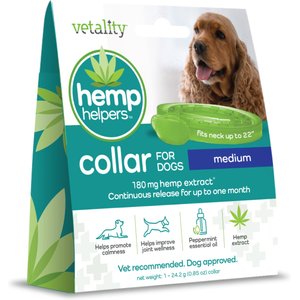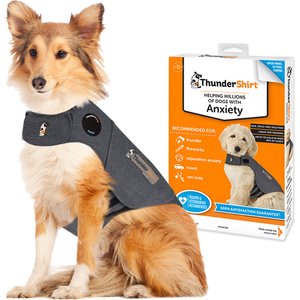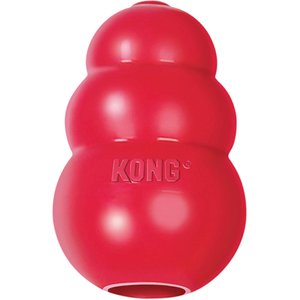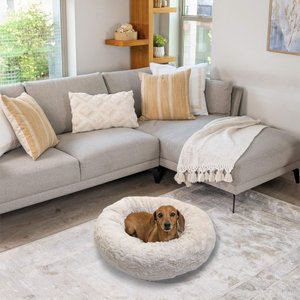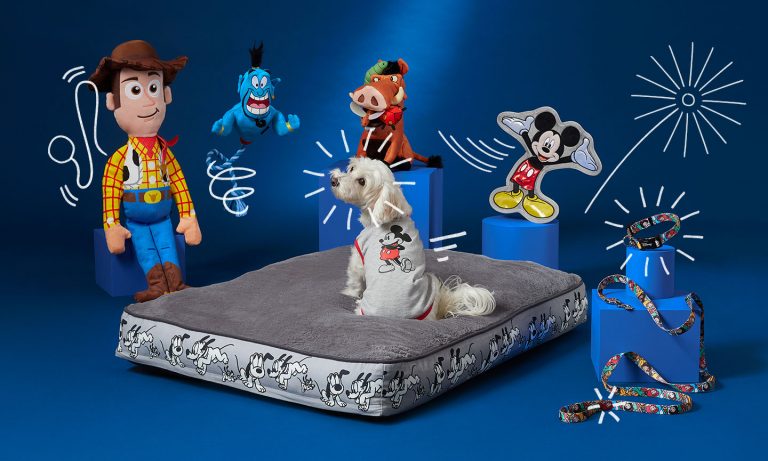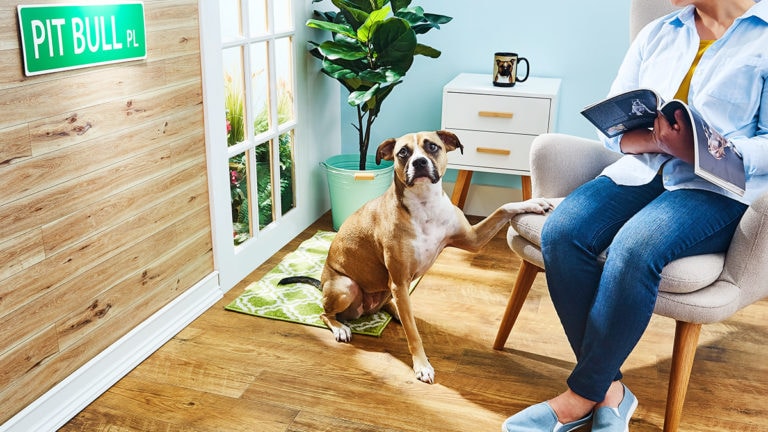When your pup’s dealing with stress or occasional anxiety, it’s only natural to want to do whatever you can to help them feel at ease. Whether you have a dog who sometimes struggles with separation anxiety or who gets upset about stressful events like thunderstorms, fireworks or trips in the car, the best calming aids for dogs can help them stay calm, cool and collected. To help you choose the right one for your anxious fur baby, we’ve rounded up the best dog calming aids based on Chewy customer sales, ratings and reviews.
- 1
- 2
-
3
Best Liquid Dog Calming SupplementGNC Pets ULTRA Calming Tincture Dog Supplement, 60-ml bottle $20 on Chewy
-
4
Best Powder Dog Calming SupplementPurina Pro Plan® Calming Care Powder Supplement for Dogs, 30 count $34 on Chewy
- 5
How To Find the Best Dog Calming Aid
There are a variety of different types of dog calming aids on the market (see more on the types below). Andrea Cermele, DVM, a veterinarian at Best Friends Animal Society, says to consider the following before buying:
- The source of stress or anxiety: Understanding what causes your dog’s anxiety can help determine which type of calming aid is best. Dr. Cermele says anxiety in dogs can stem from various factors, such as separation from their pet parent, changes in their environment, loud noises or even their health. A short-term solution like a dog calming chew may work well for a visit to the vet, while a longer-term solution like a compression vest or plug-in diffuser may be best for separation anxiety or ongoing anxiousness.
- Your dog’s preferences: All dogs are different, so consider what your dog may be more drawn to before buying a calming aid. For example, some may not like to wear items, so a calming collar or anti-anxiety vest wouldn’t work well for them. Others may really enjoy treats, which would make calming treats a good option to try.
- Whether it’s suitable for dogs: Even though DIY remedies (including essential oils) are well-meaning, not all of them are suitable for dogs. Always select a calming aid that is specifically designed for dogs and highly rated and well reviewed. When opting for a calming supplement, look for the National Animal Supplement Council (NASC) Quality Seal on the package, which indicates that a company has undergone a third-party audit and meets certain quality-control criteria. Be sure to follow all dosage instructions, too.
- Your vet’s input: Always consult your veterinarian before buying or using any dog calming aids. They can help provide guidance on what to buy, and can also help determine the source of your pet’s stress.
10 Best Dog Calming Aids
Following are the calming products other pet parents just like you use and recommend. As always, remember to consult your veterinarian before trying any calming aid for dogs. They can help you rule out any medical causes for stress and anxiety before you pursue behavioral supplements such as these.
Best Overall Dog Calming Aid
-
Keep them calm
When the fireworks go off our dogs comes begging for his hemp calming chews. The chews do have a calming effect on him and he knows it.
-
Grieving dog
My 7yr old Great Dane lost her brother and was experiencing separation anxiety when we would even leave the room. I started giving her these, she still has some issues but it is not as severe.
-
This appears to be working
Check out the weight, your dog needs to be over 20 pounds, which our three month old Rotty is far beyond. Either his training and age is making a difference of this stuff really works. I just ordered another small bag to see if the affect keeps going. I give it to him right after breakfast, when he turns into a baby alligator with the zooms before we can get our first good walk completed. It doesn't zonk him. He is a little over 30 pounds and just turned three months.
Best Dog Calming Chew
-
Best calming chews for my Big baby
I have a 112lb Berner. He is extremely afraid of the sound of snow coming off the roof& the wind and the wind. (We have both throughout the winter.) We usually find him panting in the closet. I give him the calming chews, and he is able to lie down, and his panting slows down and stops
-
Medium level benefit
My GSD loves them, like a treat. For heavy duty calming, or riding in the car, dog needs pres. calming aids. However, for smaller issues, like neighbors with their dogs next door, active in their yard on weekends, it helps a lot to calm my dog down so he doesn't bark as much and get so riled up as much. I don't like to use the pres. pills anymore than I have to so Zesty Paws fills in the gap very nicely.
-
Truly Shocked - It Works!
I have a 1 1/2 year old Golden Retriever/Irish Setter mix who is the sweetest girl imaginable, but she tends to be anxious most of the time. She thrives in calm, quiet environments and struggles with new experiences and loud noises. My partner and I have been training her alongside her 1 year old Golden sister, but her anxious tendencies have been hard to shake. We finally decided to try these hemp dog chews, and wow, they work! She’s still a bit skittish, but she’s noticeably more confident, playful, and even approaching things that used to terrify her. The once-dreaded poop disposal bin in our neighborhood? No longer a monster to...
Best Liquid Dog Calming Supplement
-
Nervous in storms
I have a 20 lbs dog and only gave her 1/4 of the dose it called for. In 30 minutes she was chilled out and the storms didn’t bother her.
-
Excellent Product
This medication worked really good for my 3 1/2 female Chihuahua. She is terribly afraid of thunderstorms and can sense them before they arrive at our area. I give her this and it calms her down without over sedating. I strongly recommend this product.
-
Calming meds
This worked really well to calm our 60lb fur baby while visiting family at Christmas. They have an older dog and ours is just 1 yr old. Still springy like a puppy. Very good product.
Best Powder Dog Calming Supplement
-
She loves her “shakes”
Since I shake the package onto the top of her breakfast, we call this her “shakes.” She will let me know if I have forgotten them.
-
A Chewy person called me to alert me
I had ordered a second package, when I only wanted one. However the second package arrived, and I was not charged for it! I sort of felt guilty, they were so nice about it all. They certainly bent over backwards to help me out of the problem I had created!
-
Really works
My dog has some separation anxiety and I tried the calming supplements. I thought he was better and discontinued using them. I was wrong. He is back on these supplements and he is so much less anxious now.
Best Dog Calming Spray
-
Help-At last!
My dog gets very nervous during thunderstorms and fireworks. I bought a Thunder shirt and that helped. I supplemented it with the Thunder Essence and that calmed him. It made him feel better; that makes me feel better.
-
A WONDERFUL SCENT FOR BOTH DOGS AND THEIR OWNERS
I purchase multiple bottles of this and use it instead of room air freshener throughout my home. I also spray it on all of my dog beds, but also my bed, and the upholstered furniture too. This is totally different than the other type of Calming spray (made by the same company) that you're supposed to spray on the black dot on the front of the Thundershirts. This is all natural calming scents that are very enjoyable. The two products smell completely different, FYI, and the other spray bottle (smaller bottle) can only be used in certain areas and in limited amounts. If you read the ingredients in this spray, I think you'll also...
-
Great spray
My dog was a basket case during storms. This spray on her blanket calmed her down immediately. I could not believe it.
Best Diffuser for Calming Dogs
-
These work wonders for my crazy Daisy.
They are great but where have they gone?? I can't find the refills or the kits anywhere!! Thunder ease, in my opinion, does not work as well.
-
100% The BEST Product Ever To Comfort Dogs!!!!!!!
I bought this as a suggestion from our chihuahua's vet. My 3 year old male chihuahua gets nervous while we're gone, while my 11 year old female chihuahua is as chill as they come. The Adaptil doesn't smell like anything, but the doggies sure can and it helps Winston stay chilled out while we're away from home. Winston has not had any chewy anxiety or accidents in the house since using this. It's a pheromone that helps chill dogs out. 100% Pet Parent Approved!!!
-
Adaptil is an effective calming agent
In the event that I forget to replace the refill in 30 days I can sure tell the difference in my toy poodles barking ! My daughter borrow one of my refills telling me she discovered what’s wrong with her French bulldog! Her refills ran out . unnoticed
Best Dog Calming Collar
-
Happy Dog
After having worn an adaptil collar for years, this collar was a great surprise in how well it soothed my reactive dog.
-
Very helpful
My elderly rottweiler has shown signs if anxiety throughout her older years but this necklace has helped quite a bit. Especially when we have company.
-
Hemp helper calm collar
My dog has been so much calmer since we started using this collar. I love the scent. it is really easy to size and it stays on.
Best Anti-Anxiety Apparel for Dogs
-
Keeps my dog calm
This is a soft material, but sturdy, well made product that is fairly easy to put on my dog. During thunderstorms, it helps soothe his nerves. Not sure why it works, but I guess it has the same effect for dogs that swaddling has for babies.
-
Helps so much!
I was skeptical, but this actually really helps my anxious pup. It’s like a security blanket she can take anywhere!
-
Anxious Dog Relieved!
This Thundershirt helped my Anxious Doggo calm down during family get togethers. I noticed a huge difference in his demeanor while wearing the shirt. I definitely recommend for any stressful situations.
Best Toy for Calming Dogs
-
Last years!
I love these for my dogs. I just retired the very first one I bought - 15 yrs ago! I full them and sometimes freeze them, either way they keep my pups occupied while they get treats.
-
Color
It was much bigger than her first one. I put treats in it for her. And it keeps her busy for hours.
-
Chew proof!
We bought one of these when our mini dachshunds were pups. They still love them at 3 we just have to find them.
Best Dog Calming Bed
-
Comfy bed for snuggly pups
My pup loves curling up in this cozy bed. She’s about 18lbs and a bit long for her weight, the small fits her perfectly
-
Cozy Comfort!
We purchased the Lux version, which is really attractive and inviting for our mini poodle. Turns out she preferred the medium size even though she’s only 8 1/2 lbs.
-
Soft, Soft, Soft
My dogs loves these beds they are so soft and cuddly I bought calming blankets and throw them on top to add extra softness. They are the best !
How We Chose These Products
All the products we’re featuring in our list of dog calming aids are best-sellers at Chewy that are also top-rated, having a 4-star rating or higher. You can rest assured that customers—dog parents just like you—have used these products and love them. We know how tough it can be to navigate the retail space, so we wanted to take that burden off your shoulders so you and your pup can feel better pronto.
Types of Dog Calming Aids
Just as there are many different types of stressful scenarios, there are many different types of calming aids for dogs. Here are some of the most common options.
Calming Supplements
Calming supplements, delivered via dog chews, powder or liquid drops, are a useful way to manage your dog’s occasional anxiety. The chews can be given on their own, while the liquid drops and powder supplements are usually mixed in with the pet’s food. You get the benefit of leveraging a familiar object (that they enjoy) to administer the supplement, and they enjoy the snack.
“These products often contain ingredients such as L-theanine, L-tryptophan, valerian root, chamomile and melatonin,” says Dr. Cermele. “Many dog owners find these effective for reducing stress related to situations like thunderstorms, travel or visits to the vet office.”
Other common ingredients used in these calming chews include ginger and thiamine. What’s not to love about a savory chicken-flavored, pork-flavored or bacon-flavored treat that has wellness benefits, too?
Calming Sprays
Dog calming sprays help reduce reactions to stressful situations either through “dog-appeasing pheromones” (DAP) or natural ingredients known for their calming benefits, such as lavender and chamomile. They work by mimicking natural calming signals that help your pup feel more at ease, making them ideal for short-term stressful events such as thunderstorms, travel or fireworks.
They’re typically sprayed on your dog’s environment, bedding or directly on the fur (if deemed safe). (Note: If you have different types of pets in the home, like a cat, make sure the spray is fully dry before letting your pets interact. Products meant for dogs could be toxic to cats.)
Plug-in Diffusers
Wall diffusers plug directly into an electrical outlet and disperse a calming pheromone into the air to help soothe your pup, Dr. Cermele explains.
They’re similar to sprays, only they emit the scent non-stop versus for short periods of time. That makes them suitable for situations when your dog experiences longer durations of stress—like when you’re away from the house and they have separation anxiety—or in cases where your pup is often on edge.
Calming Collars
Calming collars are placed around your dog’s neck and emit a calming smell via pheromones or herbal ingredients. “The most popular type of calming collar uses synthetic versions of the pheromone that mother dogs produce to soothe their puppies,” Dr. Cermele says. “Studies and subjective evidence suggest that pheromone-based collars can be effective in reducing anxiety in many dogs, particularly for ongoing stressors like periods of separation, changes in the home environment or loud noises like fireworks.”
She adds that herbal-based collars, which use ingredients such as lavender and chamomile, may also have a soothing effect, though their effectiveness can vary more widely among individual dogs.
Generally speaking, calming collars are non-invasive and convenient, making them a practical option for dog parents who may find it challenging to administer supplements or other calming aids regularly.
Anti-Anxiety Apparel
Certain garments are designed to have a calming effect on dogs, including anti-anxiety vests and calming caps. They provide gentle compression similar to swaddling. The light, constant pressure helps calm your dog’s nervous system. Vests compress your dog’s body, while caps create pressure around their head. (Note: For caps, you’ll want to make sure they aren’t so tight as to cause choking.) Since they’re placed over your dog’s ears, they can also help reduce stressful loud noises.
“Many dogs find this pressure comforting, and it can help reduce anxiety during stressful situations such as travel, vet visits or thunderstorms,” Dr. Cermele says. They can also work well for grooming sessions (especially caps to shield pets from the new noises) and other overwhelming environments.
Toys
Stress-relieving dog toys are specifically designed to provide your pup with mental stimulation, comfort and, yeah, a bit of distraction from whatever’s making them feel anxious. These toys often incorporate features such as calming scents, treat-dispensing mechanisms and soft, chewable materials.
Some examples include lick mats, interactive puzzles, and frozen toys or objects that they can chew for long periods of time. These are great for when your pup is left alone or going through a stressful event at home, like a thunderstorm or when you have visitors.
How To Calm Dogs
Stressed or anxious dogs exhibit both clear and subtle signs. Dr. Cermele says that obvious signs include:
- Excessive barking or whining
- Cowering
- Trembling
- Growling
- Snapping
- Biting
- Panting (not related to exercise or heat)
- Pacing
- Digging
- Appetite changes
- Destructive behaviors like chewing or getting into items they shouldn’t
“Less obvious signs of stress include yawning when not tired and excessive lip licking,” Dr. Cermele says. “Dogs may also show avoidance behaviors, such as turning away, hiding or trying to escape from a situation. Excessive drooling, dilated pupils or seeing more of the whites of the eyes—known as whale eye—can also indicate stress.”
If you notice any of these symptoms in your dog, it’s important to get to the bottom of the issue. Follow these expert tips from Dr. Cermele for helping to calm stressed dogs.
Step 1: Identify the Stress Trigger
Observe your dog’s behavior and try to pinpoint what triggers their anxiety. Common causes of stress in dogs include loud noises, separation from their pet parents, new environments or experiences, health issues and a history of trauma. All these sources will require unique approaches to calming your dog’s anxiety.
Step 2: Create a Safe Environment
One of the best things you can do to help ease your dog’s stress levels is to provide them with a safe space with accessibility. Set up a quiet, comfortable area where your dog can retreat, with their bed, toys and blankets. Do what you can to minimize exposure to triggers like loud noises or unfamiliar environments or experiences.
Step 3: Try Calming Aids
Along with a safe environment, it’s often helpful to soothe your pup with calming aids, including the options we’ve included above. You’ll want to choose the best type of calming aid for your dog’s source of anxiety and their personal preferences. Always use these items according to instructions and consult with your veterinarian for advice.
Step 4: Engage in Calming Activities
Dogs require both mental and physical stimulation to help reduce their overall anxiety levels and boost their well-being. Make sure to engage them in regular physical exercise via walks, indoor playtime, or outdoor parks and activities. Mental stimulation can come from interactive games, like puzzles and tug-of-war. Training is another great way to mentally engage your pup.
Step 5: Maintain Consistency
As best as you can, try to maintain consistent schedules for feeding, walking and playtime. Sticking to a schedule helps your dog know what to expect each day. During situations that are out of the norm or stress-inducing, provide your dog with calming aids and activities, adjusting as needed to suit their needs.
Talk to Your Veterinarian
While calming products for dogs are helpful, it’s important to remember that every pup is unique and all situations require individualized treatment. “Consulting with a veterinarian before starting any new calming aid is always a good idea, as they can provide guidance tailored to your dog’s specific needs and ensure there are no underlying health issues contributing to their anxiety,” Dr. Cermele says.
She also recommends veterinary intervention for a stressed or anxious dog anytime signs of stress don’t resolve or worsen with simple behavioral interventions, and in cases where your dog’s anxiety is causing significant behavioral changes, such as aggressive tendencies, excessive barking, destructive behavior or withdrawal.
Dog Calming FAQs
Q: What is the best thing to calm a dog?
A: The best way to calm a dog is to determine the source of their stress or anxiety and do what you can to minimize the stressor. Creating a calm and safe environment can help, as can using a dog calming aid such as a calming collar, vest or treat.
Q: Do calming aids work for dogs?
A: Yes, dog-specific calming aids can work well for dogs. There’s research and anecdotal evidence that supports the use of pheromone-based dog calming products, chew toys, calming treats and beyond. The type of aid you use will depend on the cause of stress and your dog’s preferences.
Q: Are there any side effects associated with dog calming aids?
A: Dog calming aids are generally considered safe, but there are potential side effects to consider. These include digestive issues, sedation, skin irritation from collars, respiratory problems with sprays, discomfort from vests, potential toxicity from aromatherapy, overconsumption with treats and behavioral dependency. Consult a vet before use and monitor for adverse reactions.
Q: Can I give my dog a calming aid before a vet visit?
A: Some pet parents find it very helpful to provide their dog with a calming aid before going to the vet or groomer, which are understandably stressful situations. This can range from giving them a calming supplement (like a chew), giving them a calming toy, or putting them in a calming vest or cap.
Life can be stressful, but that doesn’t mean your dog has to be stressed-out. Give them a new sense of ease, whether they’re faced with loud noises or car rides, with the best calming aids for dogs. Looking for other ways to reduce your dog’s stress? Check out our guide on how to calm dogs with anxiety.
Expert input provided by Andrea Cermele, DVM, a veterinarian at Best Friends Animal Society, a leading national animal welfare organization.
This content was medically reviewed by Chewy vets.
More on how you and your dog can stress less:
Share:
